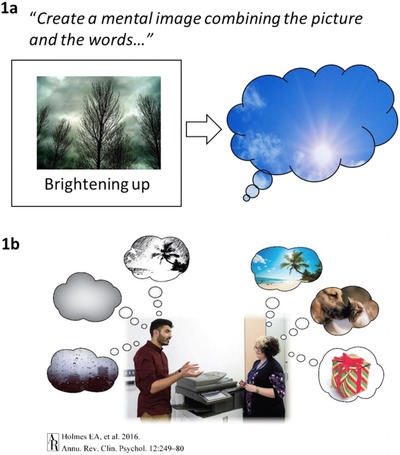Figure 1.

Illustration of (a) an example training stimulus from one of the computerized positive imagery training tasks; (b) the lack of positive mental imagery that characterizes depression. In one version of the training task, participants view a series of ambiguous photographs paired with a positive caption. Their task is to generate positive mental image that combines the photo with the caption. In this example (1a), the participant might imagine the clouds clearing and enjoying a sunny day. The possibility suggested by the case illustrated in this article is that the positive images generated during the training may “pop back” or “flash” to mind during their everyday life, so that the individual's experience becomes more like the person on the right‐hand side of (1b) rather than the person on the left. Figure 1b is reproduced with permission from the Annual Review of Clinical Psychology, Volume 12 © 2016 by Annual Reviews, http://www.annualreviews.org
